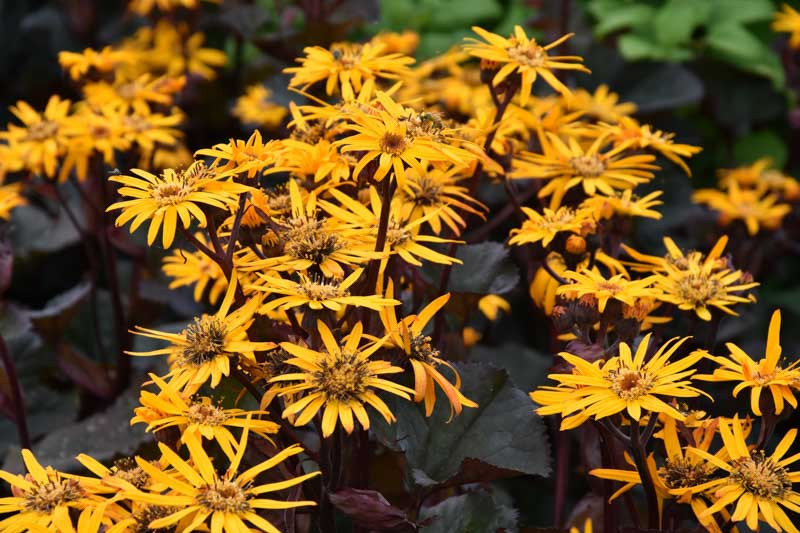Ligularia (Leopard Plant)
Ligularia, often known as the Leopard Plant, is a distinctive perennial that brings dramatic flair to garden spaces, particularly those with shade.
Habit: Ligularia exhibits a bold and architectural habit. It forms large, clumping mounds of foliage, which can be quite expansive, ranging from heart-shaped to serrated leaves, often with a glossy or leathery texture. The plant grows upright and can become quite bushy, making it a striking feature in garden design.
Hardiness: This plant is hardy in USDA zones 3 through 9, showcasing a notable tolerance for cold climates. It thrives in moist, well-drained soil, preferring environments that mimic its natural habitat in Asia’s mountainous regions. While it can withstand cooler temperatures, Ligularia’s leaves may wilt under the hot afternoon sun, indicating its preference for cooler, shaded areas.
Flowers and Bloom Time: Ligularia is admired for its tall, eye-catching spikes of daisy-like flowers, which bloom predominantly in mid to late summer. These vibrant flowers, usually in shades of yellow or orange, rise above the foliage and add a splash of color to the garden during a season when many other plants have ceased blooming.
Uses: It is an excellent choice for adding visual interest to shaded garden areas, such as woodland gardens, shaded borders, or near water features. Its size and distinctive appearance make it ideal for creating focal points in the landscape.
Benefits: Beyond its aesthetic appeal, Ligularia attracts bees and butterflies, enhancing garden biodiversity. Its preference for moist conditions makes it suitable for planting in damp areas where other plants might struggle. Additionally, its foliage provides texture and color contrast when paired with other shade-loving plants.

